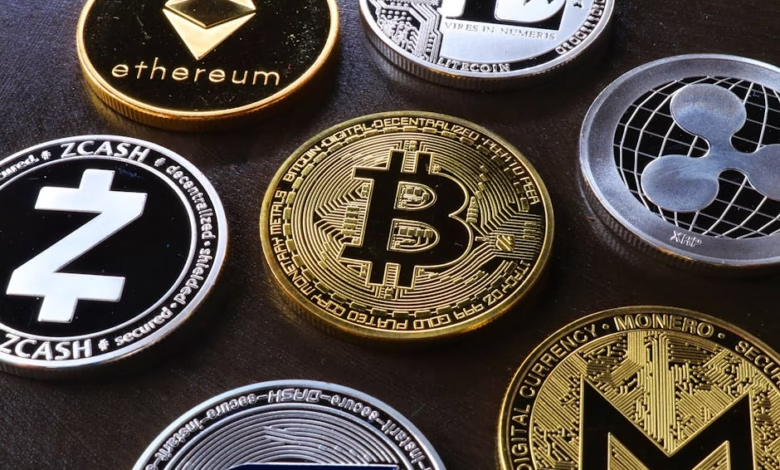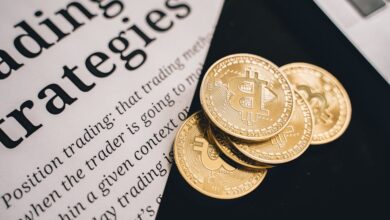The Essential Role of Gold in Forex and Global Trade: Insights on Investment Strategies and Market Trends

In today's intricate financial landscape, gold remains an enduring symbol of value and stability, particularly in the realms of currency exchange and global trade. As a safe haven asset, gold has attracted the attention of investors and central banks alike, serving as a hedge against economic uncertainty and inflation. This article explores the multifaceted role of gold in forex markets and international commerce, shedding light on how gold market trends influence investment strategies and economic policies.
We will delve into the dynamics of gold as a pivotal player in currency fluctuations, understanding the impact of gold prices on forex trading and investment behaviors. Furthermore, we will examine how central banks utilize gold reserves to stabilize their economies, particularly in times of inflation. From gold mining and refining to the growing popularity of gold ETFs and the rise of sustainable gold mining practices, this article will provide a comprehensive analysis of the gold trade's influence on global economic trends. Join us as we uncover the significance of gold coins, bullion, and collectibles in shaping the future of finance and investment.
- 1. The Role of Gold as a Safe Haven Asset in Currency Exchange and Global Trade
- 2. Understanding Gold Market Trends: Impact on Forex and Investment Strategies
- 3. Gold and Inflation: How Central Banks and Gold Reserves Influence Global Economics
1. The Role of Gold as a Safe Haven Asset in Currency Exchange and Global Trade
Gold has long been recognized as a safe haven asset in the world of currency exchange and global trade. Its intrinsic value and historical stability make it a preferred choice for investors and central banks during times of economic uncertainty. When currencies fluctuate or geopolitical tensions arise, investors often turn to gold as a reliable store of value, leading to increased demand in the gold market.
The relationship between gold and inflation is particularly noteworthy. As inflation rises, the purchasing power of fiat currencies diminishes, prompting investors to seek protection through gold investment. This trend has been observed in recent years, where gold prices have surged alongside inflation concerns, reinforcing its status as a hedge against currency devaluation.
Central banks play a crucial role in the gold market, holding substantial gold reserves as part of their monetary policy. The accumulation of gold by these institutions not only stabilizes their currencies but also fosters confidence in their economies. Countries with significant gold reserves, such as the United States, Germany, and Italy, often find their currencies more resilient in global markets.
In addition to traditional gold investments, such as gold bullion, coins, and jewelry, the rise of gold ETFs and gold futures has made it easier for investors to gain exposure to this precious metal. These financial instruments allow for greater flexibility and liquidity in the gold market, catering to both retail and institutional investors. Moreover, the advent of gold and cryptocurrency has created innovative ways to invest in gold, combining the benefits of digital assets with the stability offered by physical gold.
Sustainable gold mining practices are gaining traction as consumers become increasingly aware of ethical issues surrounding gold production. This trend is crucial for maintaining global gold demand, as buyers seek responsibly sourced gold, whether for investment or luxury jewelry. Additionally, the recycling of gold, whether from old jewelry or electronic waste, has become an essential part of the gold trade, contributing to a more sustainable and circular economy.
Gold smuggling remains a challenge in the global gold market, impacting both legal and illegal trade. The complexities of gold refining and production can create loopholes that unscrupulous entities exploit. However, regulatory efforts and increased awareness are helping to combat this issue.
In conclusion, gold's role as a safe haven asset in currency exchange and global trade is multifaceted. Its historical significance, combined with contemporary investment vehicles and sustainable practices, ensures that gold will continue to be a vital component of the global financial landscape, influencing everything from gold prices to market trends for years to come.
2. Understanding Gold Market Trends: Impact on Forex and Investment Strategies
Understanding Gold Market Trends: Impact on Forex and Investment Strategies
The gold market plays a pivotal role in the forex landscape and influences investment strategies across the globe. Gold, often regarded as a safe haven asset, tends to gain traction during times of economic uncertainty, inflation, or geopolitical tensions. These factors significantly impact gold prices, which in turn affect currency valuations and trading strategies.
In recent years, global gold demand has surged, driven by factors such as central banks' gold reserves and increased interest in gold ETFs (Exchange-Traded Funds). Investors view gold as a hedge against inflation, prompting many to reconsider their gold investment strategies. With rising inflation rates, the allure of physical gold, gold coins, and gold bullion has intensified, as they are perceived as more stable compared to fiat currencies.
Market trends indicate that gold production and recycling are crucial to understanding supply dynamics. Sustainable gold mining practices are gaining importance, as investors seek responsible and ethical sources of gold. The integration of technology in gold refining and mining processes also plays a role in enhancing efficiency and reducing environmental impact.
Moreover, the relationship between gold and cryptocurrency is becoming increasingly relevant. As digital currencies gain popularity, many investors are exploring the balance between traditional assets like gold and emerging digital assets, which can provide diversification and mitigate risks.
For those involved in gold trading, understanding gold market analysis is essential. Observing trends in gold prices, global economic indicators, and shifts in gold demand can provide valuable insights for making informed forex and investment decisions. As the gold market evolves, so too will the strategies employed by investors looking to capitalize on its potential.
Ultimately, whether through gold coins investing, acquiring gold bars, or trading gold futures, staying attuned to gold market trends is vital for any investor aiming to navigate the complexities of both forex markets and the broader investment landscape.
3. Gold and Inflation: How Central Banks and Gold Reserves Influence Global Economics
The relationship between gold and inflation is a critical factor in understanding how central banks and gold reserves influence global economics. Central banks often hold significant quantities of gold as a form of wealth preservation and as a hedge against inflation. When inflation rises, the purchasing power of fiat currencies typically declines, leading investors to seek safe haven assets, such as gold. This can drive up gold prices, as demand increases in response to economic uncertainty.
Central banks play a vital role in the gold market through their gold reserves. These reserves are not only a store of value but also a tool for monetary policy. By adjusting their gold reserves, central banks can influence market confidence and stability. For instance, during times of economic turmoil, central banks may increase their gold holdings to reinforce trust in their currency, while also impacting global gold demand.
Gold investment, whether through physical gold, gold ETFs, or gold futures, tends to rise during inflationary periods. Investors view gold as a reliable asset that can protect their wealth against declining currency values. This trend can be observed in various forms of gold, including gold coins, gold bars, and luxury gold jewelry, which often appreciate in value during inflationary times.
Moreover, the gold mining industry plays a significant role in this dynamic. Sustainable gold mining practices are increasingly important as they address environmental concerns and ensure the longevity of gold production. As global demand for gold continues to rise, so does the need for efficient and responsible gold refining and recycling methods to meet this demand without compromising the planet.
In recent years, the introduction of gold and cryptocurrency has further complicated the landscape of gold investment. While digital currencies present new opportunities, traditional gold remains a foundational asset in the global economy. Gold smuggling and illegal gold trade can also impact market prices and the overall stability of the gold market, highlighting the need for stringent regulations.
In summary, the interplay between gold and inflation significantly affects global economics. The actions of central banks regarding their gold reserves, combined with market trends and investor behavior, shape the landscape of gold prices and its status as a safe haven asset. Understanding these dynamics is essential for anyone interested in gold market analysis and investment strategies.
In conclusion, the intricate relationship between gold and currency exchange plays a pivotal role in shaping global trade dynamics. As a safe haven asset, gold remains a cornerstone for investors seeking stability amidst market volatility. Understanding gold market trends is essential for devising effective investment strategies, particularly in the realm of forex. The impact of gold prices on inflation and the actions of central banks with their gold reserves further highlights gold's significance in the global economic landscape.
Investors are increasingly turning to gold ETFs, gold futures, and physical gold as they navigate the complexities of currency exchange. Moreover, the rise of sustainable gold mining practices and the importance of gold recycling underscore the need for ethical considerations in gold production. As global gold demand continues to evolve, the interplay between gold and cryptocurrency introduces new avenues for investment and trade.
As we look to the future, maintaining awareness of gold market analysis, including the influence of gold coins, gold collectibles, and luxury gold items, will be crucial for anyone involved in the gold trade. By staying informed about these factors, investors can make more strategic decisions in the ever-changing landscape of currency exchange and global trade. Ultimately, gold remains an enduring asset that not only reflects economic stability but also serves as a testament to the complexities of global finance.





